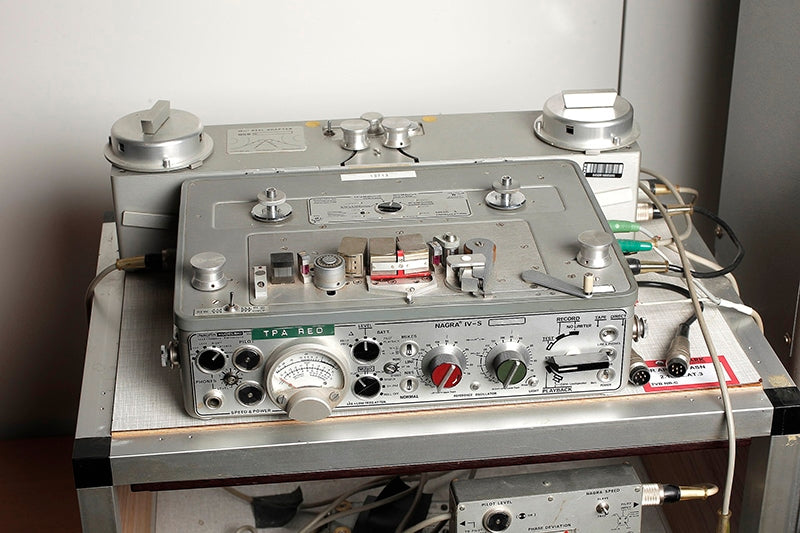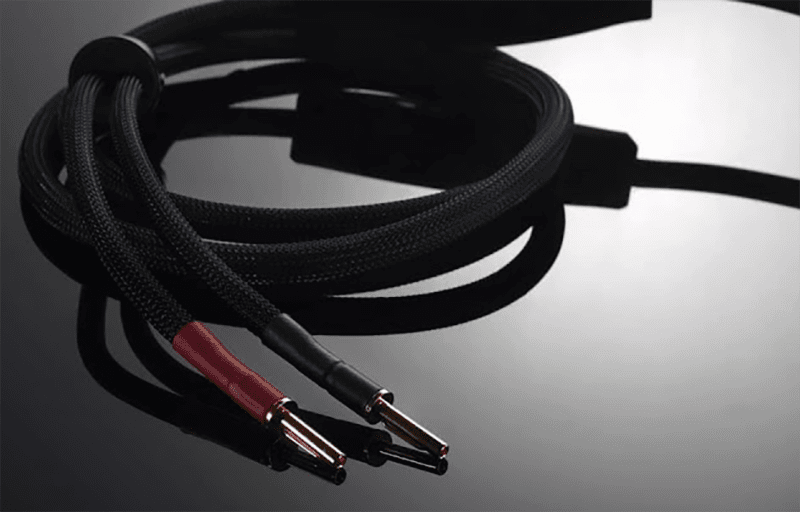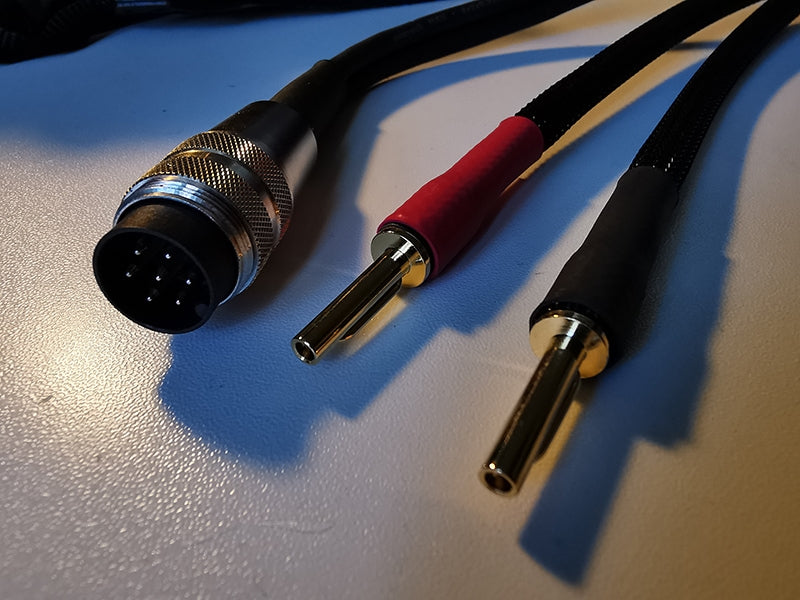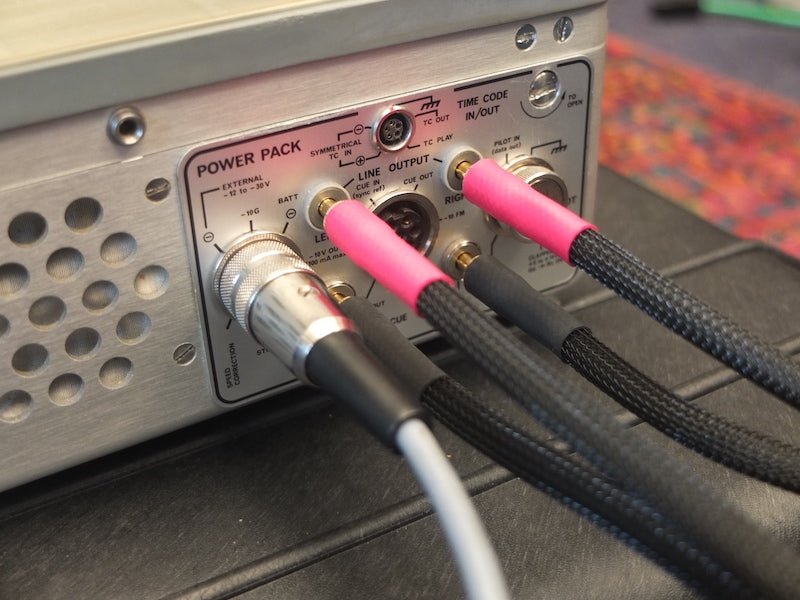(Please note that this installment relates directly to the previous column, published in Issue 166.)
Having established that my comparison between the Tuchel and the four-banana-sockets line-level outputs on the Nagra IV-S open-reel tape recorder was not definitive in true A/B-testing terms in that it didn’t compare like with like, I embarked on a number of subjective listening sessions. For those who have read the last issue and may have forgotten, and for those who can’t be bothered, the brief recap is this:
Not long ago, Nagra approached Transparent Audio to produce a dedicated, impedance-matched output cable for the Nagra IV-S reel-to-reel deck, using the quartet of 3 mm banana sockets on the right-hand panel (see header image above). Although out of production, possibly thousands of Nagra IV-S machines remain in use, and are snapped up instantly when they appear on online selling sites. Please note that even one which has been worked to near-death after years of pro use will still command a couple of grand, while I have seen close-to-mint examples change hands for as much as $10,000. One needs to know the Nagra’s worth to provide context for the cost of the cables under audition.
As to why Transparent would offer such a service, beyond responding to Nagra’s request, it is an example of the company’s long-held practice of offering custom products. Indeed, the Transparent cables I use in my reference system are specifically matched to the preamp, power amp, and speakers which form its core.
A dedicated Nagra IV-S cable, therefore, is not unusual in that it is a perfect example of Transparent’s traditional equipment-matching services. It was also noted in the last installment that while the test pair comprised the company’s Reference cable, there are less-expensive cables in the catalogue which Transparent would also modify. However, CEO Karen Sumner disarmingly advised that, just as the most economical wires don’t justify modification to Nagra IV-S usage, it wasn’t worth going above the Reference – a rare case of a high-end audio manufacturer telling you not to spend more.

Nagra IV-S tape recorder. Courtesy of Wikimedia Commons/DRs Kulturarvsprojekt from Copenhagen, Denmark.
One suspects that most users operate the Nagra IV-S with the 7-pin Tuchel connector located on the left side of the Nagra IV-S. A colleague who has owned an IV-S for 40 years says he never even considered using those other outputs, the mysterious four banana (4 mm) sockets on the right-hand side. It is to this end that Transparent Audio produced at Nagra’s behest a variant of their Reference cable with four banana plugs, terminated in two RCA phono plugs, as is the Tuchel.
Equally briefly, and to disarm trolls, and some AES members and Boston Audio Society pedants, this means that not only were listeners comparing Tuchel-vs-banana (the primary raison d’être of this experiment), there were two different makes of phono plugs utilized, and the Tuchel was fitted to a different make of cable. What was ruled out as another possible cause of differences, though, was cable length, as the Transparent pair measured 6 feet while my Tuchel-terminated cable was only 4 inches shorter – surely that’s an insignificant amount?
Ultimately, if someone wants to undertake a definitive test just to hear whether or not the “four-banana” output is better than the Tuchel, one would need to implore Transparent to produce their impedance-matched Reference cable with a Tuchel connector and their own make of phono plugs. I have far-too-often taken advantage of Transparent’s good graces to even suggest it, so don’t expect a sequel to this.

The Transparent Cable for the Nagra IV-S.
It was thus decided, given the difference in phono plugs and cables, to take the opportunity instead to perform three utterly, unabashedly subjective tests, with no illusions about the results beyond pure, unadulterated, non-technical, unmeasured observation:
1) Most obvious was: Does the cable setup which Nagra ordered from Transparent sound better than the Tuchel-connected side?
2) The second was of a far more fundamental nature, especially for skeptics who find the whole cable thing to be audiophile mumbo-jumbo. (Yes, there are still dinosaurs who pooh-pooh this, as well as newcomers to hi-fi who agree with them.) This query was as simple and basic as to be banal, asking: Do cables sound different from one another?
3) As for the third, which I will leave up to you, the readers, to decide of its merits, value, or worth, whether economically, socially or politically, is: How much are you willing to spend in spite of or in acceptance of the Law of Diminishing Returns?
As a steady flow of seasoned listeners visits me in my role as a hi-fi reviewer, I was able to inveigle the aforementioned longstanding Nagra IV-S owner, who is an audiophile civilian and is not employed in the audio industry; a seasoned industry veteran who was the CEO of a major speaker company and UK brand manager of a major imported make; a manufacturer of turntables; and a marketing manager who is also an open-reel tape specialist/enthusiast/expert. It is crucial to note that none of them have any axes to grind, e.g., none of them represents a cable company which competes with Transparent. They were acting solely as fascinated enthusiasts, all with “golden ears” by any measure and limitless curiosity despite decades as audiophiles.
At this point, before expressing my own reactions to the trials, I am overjoyed to report that all four heard the same things, with remarkable consistency. It was a testimonial – OK, OK, not a scientific one – to the worth of subjective listening. Again, to disarm the measurements-only brigade, the sessions involved controlled blindfold A/B listening: I carefully matched the levels between the two outputs, and each listener was handed the remote control to switch between Input 1 and Input 2 on the Audio Research Reference 6SE preamplifier at their own moment of choosing. I did nothing to influence them, and they were not told which was which until well after they had voiced a preference.

Tuchel 7-pin cable (left) and Transparent Cable with 4 mm terminations (right).
As I do not own the adapter to convert the IV-S to 10-inch spool capability, all the listening involved tapes on 7-inch spools: 1950s 7.5 ips, 2-track pre-recorded tapes, including jazz and orchestral, as well as a copy from a master tape of a rock album. The average time each listener took to form an opinion was around 20 minutes.
Three of them definitively preferred the same cable, while the fourth listener was being either diplomatic or genuinely undecided, admitting to his own preference for a sharper, more clinical sound after decades of owning a certain brand of British electronics which I find so bright as to cause migraines. In the interests of balance, one listener uses all solid-state as well of his own making, a third uses a mix of solid-state and tube, while the Nagra IV-S owner actually uses Nagra tube electronics, so Listener No. 4 provided an additional type, which ensured that all four had individualist tastes. In other words, the listeners did not form a coterie of like-minded monomaniacs devoted to a specific audio school.
Back to the less-decisive listener: he experienced the same dilemma I suffer when asked to choose between two wines with identical scores, vintages, and terroirs, e.g., a pair of rival Chianti Riservas. But to put this into context, the three who did express assured preferences all noted that, while the differences may have been clearly audible, equally, they were subtle – hence Question No. 3, which is: “How much will you spend for a small gain?”
Because all four are realists who do not call for the smelling salts when told, for example, that a high-end cartridge costs more than $49, Question No 3 was swiftly dismissed with a universal “it is what it is.” Which tells you that the circa-$4,000 Transparent cable was preferred. In every instance, including with Listener No. 4, the Tuchel sound was described as clinical, more “hi-fi,” with less soundstage depth, but ultra-neutral. Whatever its sonic signature, all thought the sound was superb.
Again, universally, the Transparent cable was described as warmer, more lifelike, and with a discernibly more authentic soundstage, especially for the large orchestra recording. It was thus adjudged as more inviting, though two of the listeners felt that professional and studio users of the Nagra IV-S might prefer the sound via the Tuchel.
Even these seasoned listeners had to concentrate, repeatedly A/B-ing the playback. None leapt to any conclusions with a swift “A sucks” or “B is awesome” or vice versa. What staggered me – having not participated in listening panel sessions for some years – was the consistency from listener to listener. And I concurred with them, handily preferring the Transparent cable.
Thus, the answers to the three questions begged were: 1) the Transparent-via-3 mm-socketry solution was preferred, 2) anyone who cannot hear a variance between two entirely different cables needn’t ever worry about sound quality and should shut the f*** up, and 3) if that’s what it costs, then so be it. Nobody is holding a gun to your head.
Are there other lessons to be learned from this, for those who do not own a Nagra IV-S? Clearly, it was as revealing a demonstration of cable differences as any I have heard, and it should inspire all serious listeners who might feel their systems need a lift to investigate specialty cables within their budget. Next, it showed how a high-performance cable tuned to a specific component can extract better (or at the very least different) performance. As I said before, my reference system uses tuned cables, which for a reviewer is one less variable about which to worry. This includes the electrical AC mains wiring for the listening room, which has dedicated AC cabling from Transparent, Kimber, and others.
(Please note that the hi-fi room has its own mains ring, completely isolated from the rest of the house. As the mains transformer/distribution box for the entire neighborhood is on my land, on a pole sited less than 60 feet from my listening room, the AC power into my home is mighty pure, so I have yet to feel the need for AC conditioners or regenerators. But I suspect Paul McGowan is one day gonna convince me otherwise.)
In closing, thanks to Karen Sumner at Transparent Audio for assisting in this challenge, thus reaffirming what I heard last year when A/B’ing her company’s two least-expensive cables with a similar arrangement, but using a CD player with two sets of outputs. Again, the testing of the Nagra IV-S outputs wasn’t a NASA/university-science-lab-caliber experiment, just a bunch of skilled listeners using their ears. But what we heard throughout the demonstrations? Undeniable, inescapable and incontestable.
For more information on the Transparent Nagra cable, please contact Transparent Audio at support@transparentcable.com, or:
Transparent Cable
47 Industrial Park Road
Saco, ME 04072
207-284-1100
Images courtesy of the author except where noted.


